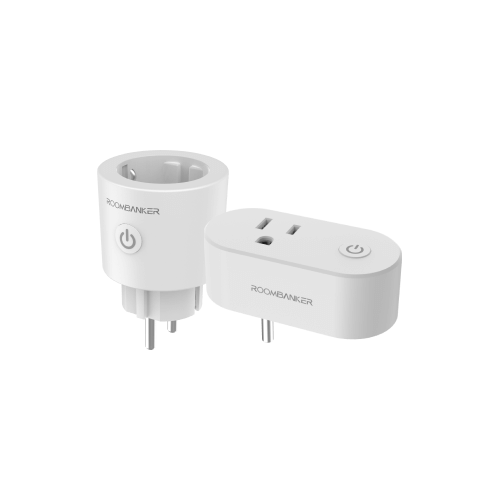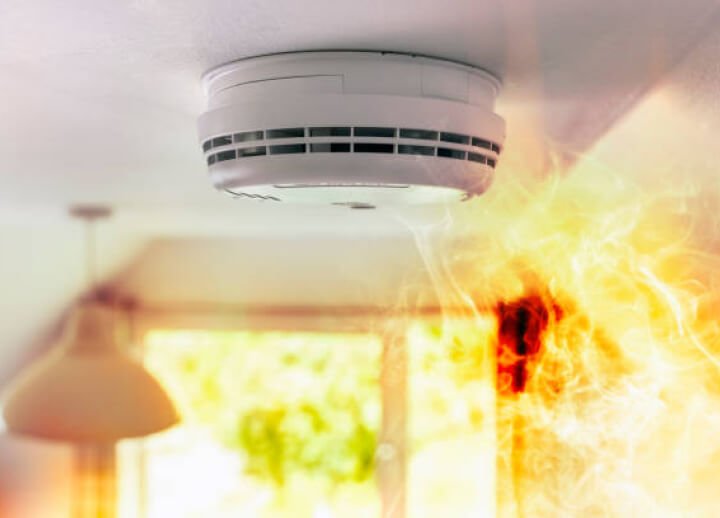
PIR Sensor
The pet-friendly PIR sensor with auto sensitivity adjustment to reduce false alarms. It can immune pets less than 10kg. More weight-immune sensors will be released soon.

Installing pet-friendly pir sensor can imporve home security and avoid false alarms that furry pets may accidentally set off. Roombanker’s PIR sensor detects changes in infrared energy to differentiate between human intruders and pets. Our sensor also features adjustable sensitivity techniques to deliver reliable detection results.


5 years
Standard CR123A
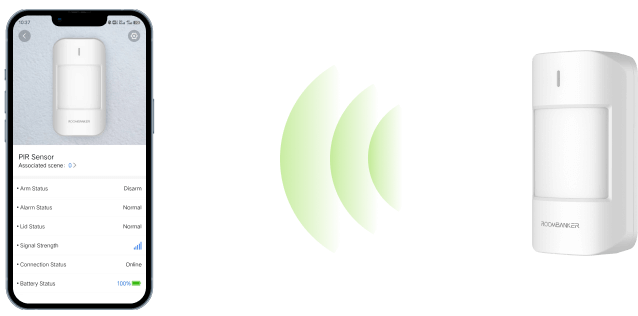


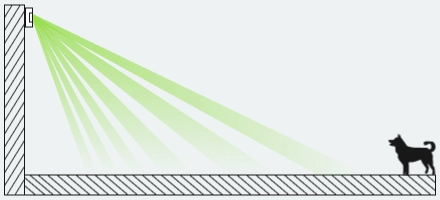

Time-saving PIR Sensor Setup with RB-Link App
By following these three steps, you can easily set up pet immune PIR motion detector on the RB-Link App with a user-friendly interface. Once setup is finished, the sensor is ready to detect any suspicious movements in your designated areas, providing enhanced security.
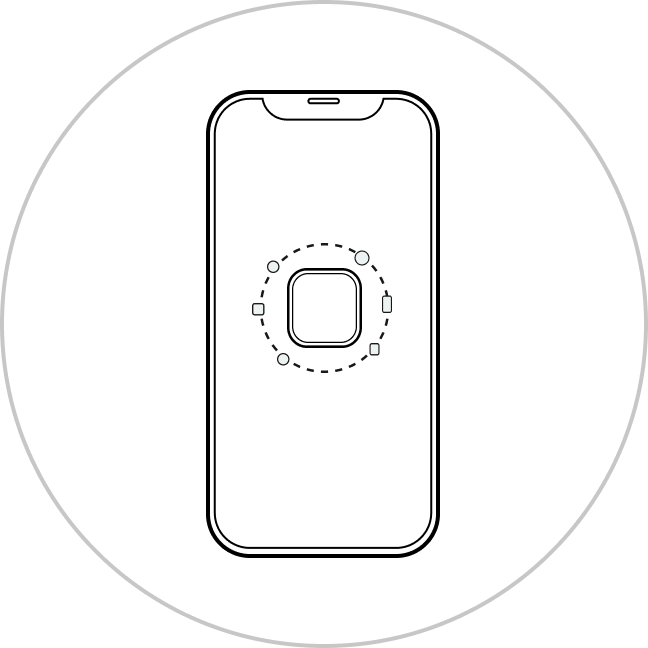
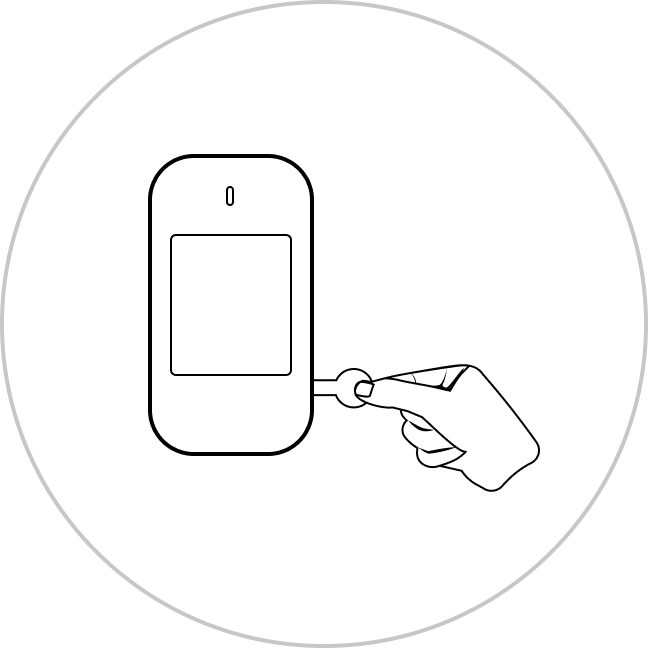

Simplified PIR Sensor Installation Meets Meticulous Design
The user-friendly and pet-friendly PIR sensor is designed with wireless functionality and two installation options (bracket or adhesive), allowing for easy and aesthetically pleasing installation on desired areas.

Prior to installation, you can perform signal strength test and use color indicators on the pet-friendly PIR alarm sensor to adjust the optimal installation location and orientation.

The pet-friendly PIR sensor is powered by a standard CR123A lithium battery, providing up to five years of worry-free use and easy replacement.
Note: the PIR sensor adopts low-power design and the shown battery lifespan value corresponds to its standby mode.

Ultra Long Wireless Sensor-to-Hub Communication for Full Home Coverage
Our pet immune PIR sensors utilize the innovative RBF protocol for seamless two-way encrypted communication with the Home Security Hub, which boasts an impressive communication distance of up to 3100 meters in open space. The sensor find versatile wireless security alarm system applications in apartments, houses, and retail shops.

Synchronized Device-to-Hub Connectivity for Swift Response
In the armed state, if someone enters your spaces, the pet-friendly PIR sensor can establish an initial connection with home security hub, which will then triggers the preset protection mechanism like activating alarm sirens to alert the residents, and network cameras to capture evidence. The hub will also conveys the alarm message to the owner via app notification, SMS and phone call.
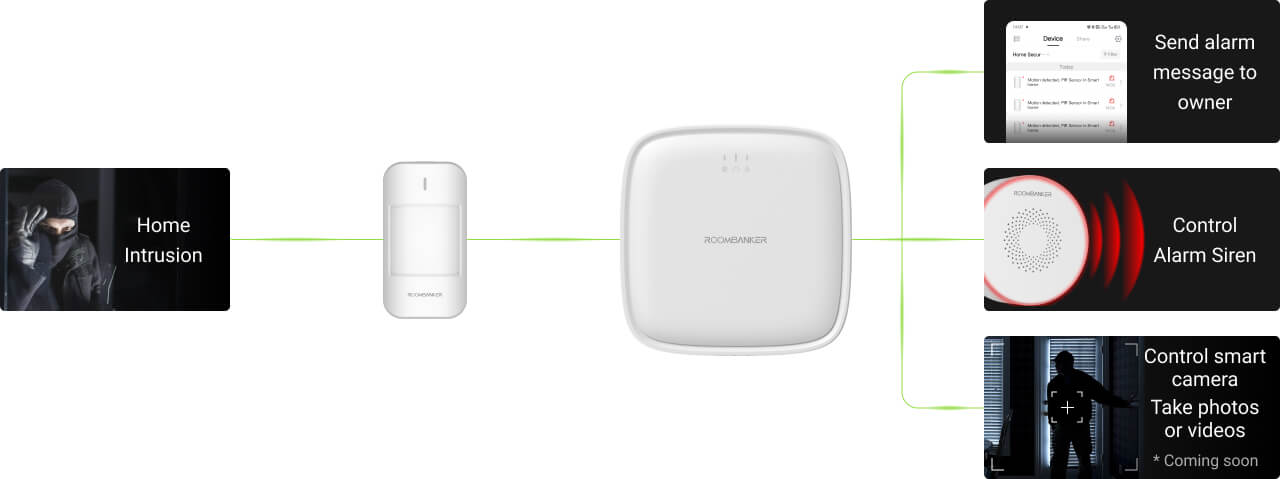
Wide Detection Coverage with a Single PIR Sensor
The pet-immune motion detector offers extensive detection coverage. With a detection range of up to 12m and a wide detection angle of up to 110°, it can be installed on ceilings or walls to sensitively detect movements within the room.

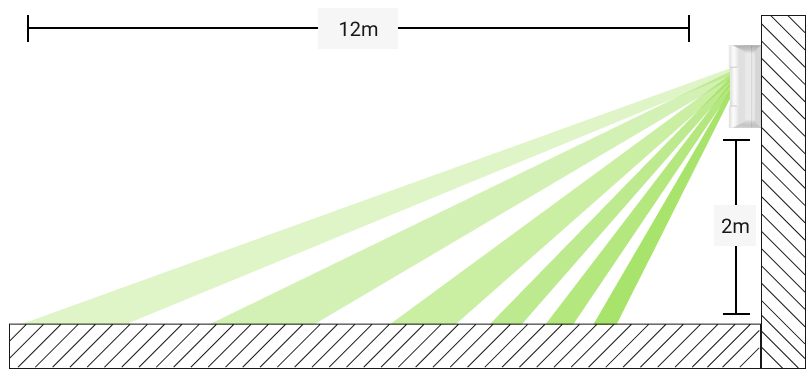
Insect-Proof Design with Excellent Sealability
The pet-friendly PIR motion sensor is engineered with an insect-proof structure with excellent sealability, preventing false alarms triggered by insects entering the sensor. This meticulous design ensures accurate and reliable detection.
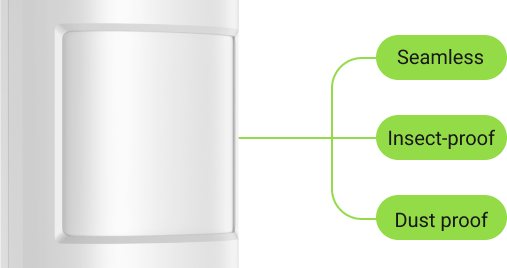
Independent Floating Threshold to Minimize Disruption
The PIR sensor with sensitivity adjustment features IFT(independent floating threshold) mechanism to dynamically adapts its detection sensitivity in response to environmental noise.

Temperature Compensation Technology to Improve Detection Precision
The PIR sensor with sensitivity adjustment is incorporated digital temperature compensation technology, allowing it to automatically adjust the alarm threshold based on external temperature changes. This ensures the accuracy and reliability of the detection results.
Pet-immune PIR Security for Peaceful Coexistence
The pet-friendly PIR sensor adopts the pet-immunity design. In the armed state, the sensor will intelligently analyze the detection info. Pets less than 10kg will not trigger the alarm, ensuring a pet-friendly and hassle-free security system.
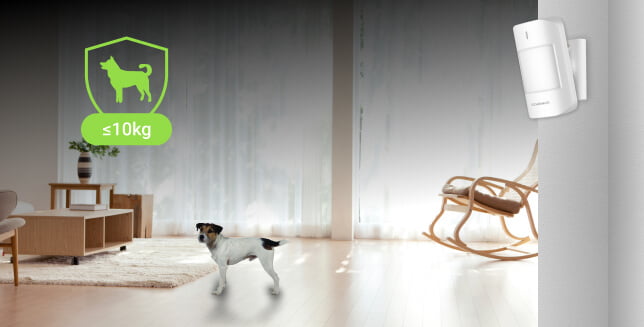
Instant Alert for Tampering Deterrent
The PIR motion sensor has tampering protection alarm, adding an extra layer of defense. In the event of an attempted forceful dismantling of the sensor, an alarm will be triggered immediately to safeguard your premises.

Resources Center
PIR Sensor FAQs
what is PIR sensor?
A PIR sensor is an electrical device that detects emitted infrared (IR) light in its field of vision, and identify human motion by measuring the temperature difference between human body and background objects to room temperature.
PIR stands for passive infrared, which indicates that PIR sensors rely on changes in the infrared radiation that is already present in their environment rather than emitting any radiation themselves. Please read our comprehensive article to learn more about what is PIR sensor and what does pir sensor mean.
What is pet-friendly PIR sensor? How does it work?
Within the PIR sensor, there are three key parts: a microprocessor, an infrared sensor with a pyroelectric element, and a specially-curved Fresnel lens. Infrared (IR) radiation is focused onto the IR sensor by a Fresnel lens, which also creates specific detecting zones. Infrared radiation is converted by an IR sensor into electrical impulses, which are then transformed into digital data by the processor.
Typical PIR sensors track variations in infrared radiation. For this reason, if someone enters a sensor's field of vision, the sensor will activate. Pet-friendly PIR sensors, on the other hand, further analyze data using advanced algorithms before determining whether to sound an alert or not. Get more detailed reading at the article pet-friendly alarm systems.
On the other hand, pets often emit less radiation, compared with human, into the PIR sensor because they are often smaller and travel on the ground. Also, the pet-immune PIR sensor lessens sensitivity when it is to the ground when mounted within a specific height range. However, if you have larger pets, this may still cause false alarms, that’why pet immune PIR sensors often has weight markings.
What to consider when using pet-immune motion sensor?
Placing the pet-friendly PIR motion sensor at an optimal height is crucial to minimize false activations caused by pets. Mounting motion sensors at too low of a height are prone to being activated by pets. To ensure the best results, we recommend considering the following three suggestions:
- PIR sensor should be installed at a suitable heightbetween 2.0 and 2.2 meters according to user manualstates;
- Large pets should not be frequently allowed to play within the PIR detection area;
- Within the PIR sensor's detection range, try to keep pets away from tables, chairs, and other objects to prevent them from jumping on them and setting off false alarms.
Why PIR sensors are necessary components in PIR Alarm System?
A basic PIR alarm system consists of these three components: an alarm control panel, PIR sensors, and alarms sirens.
PIR sensors can be used in various smart scenarios like automated lighting control and occupancy monitoring. But for PIR alarm systems, it is essential not only because it's a basic component, but also for these reasons:
- Low-power and cost: PIR motion detectors don't need to emit infrared radiation. instead, they take in infrared radiation from their surroundings, which requires less energy consumption and are often battery-operated to save cost.
- Adjustable Sensitivity to Varying Situations: PIR sensors can detect weak infrared signals and be extremely sensitive to infrared radiation in armed areas.
- Quick response: PIR sensors, in response to variations in infrared radiation, have the ability to instantly detect targets and send signals to the home security hub.
What are reasons that may cause PIR sensors generate false alarm?
- false alerts brought on by changes in the environments;
- The PIR sensoris frequently moved and not firmly fixed, which results in false alarms;
- When installed in places where there are significant temperature fluctuations, like air conditioners and ventilation fans, the PIR sensormay generate false alerts;
- when there is a significant temperature differential between the internal and external environments, and the wind blows the curtain, it sets off a false alarm;
- When the doors and windows of your protection area are opened and an animal pass by, it may cause false alarms.
What technologies are used to reduce the rate of false alarms triggered by PIR sensors?
- Digital temperature compensation: To increase the detector's accuracy and stability, this technology adjust or correct the output signal at various temperatures.
- Independent Floating Threshold: the infrared signal trigger threshold can be independently changed at various times or locations based on application needs and environmental parameters.
- Anti White Lights: Enhance the ability to withstand visible light, or "white light," which is frequently produced by lights, the sun, and other light sources to reduce false alarms.
How does your PIR sensors work with pets?
Pet-friendly PIR sensors don't solely rely on IR detection. Roombanker's employ optimized Fresnel lenses and software algorithms to analyze collected signals. This allows our pet-immune PIR senosr to immune movements from animals weighing less than 10 kg, so they won't be affected by a single large dog or even a few tiny cats.
Most pets are small and tend to stay closer to the ground, their body heat might not generate a significant enough change to trigger the sensor. Hence, we recommend mounting the PIR sensor within a specific height range to reduce sensitivity to ground-level movements (under 50 cm).
Our PIR sensors have undergone rigorous testing in our manufacturing facility to ensure their reliability and effectiveness in distinguishing between pet movements and potential intruders.
What is PIR Sensor Sensitivity?
The sensitivity of PIR motion sensor determines its ability to detect and respond to changes in infrared radiation. High sensitivity captures even the slightest adjustments in infrared radiation, ensuring reliable detection. Setting the appropriate sensitivity level for your PIR sensors is crucial for their optimal performance and accuracy.
What are the colors of PIR Sensor lights and what do they mean?
When the PIR sensor is turned on, the green light flashes continuously, which means it has entered pairing mode. Similarly, when the Findme is performed, the green light also flashes. When a person is detected, the red light flashes once.
Where is the add button of PIR sensor and how to operate it?
When the PIR sensor device is not paired, you can enter pairing mode by removing the battery. When the PIR sensor device already has a pairing record, you need to unpair the device, then press and hold the button on the device for 5 seconds. When you see the green light flashing continuously, the PIR sensor device has entered pairing mode, and you can operate the app to connect to the network. Another method is to scan the QR code on the PIR sensor device to connect to the network.



